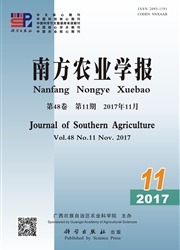

 中文摘要:
中文摘要:
【目的】证实新型黄病毒在种鹅中是否存在垂直传播,为控制该病提供可靠的流行病学依据。【方法】采用巢式RT-PCR和病毒分离技术,对患病种鹅病料、不同孵化阶段死胚、出雏蛋壳内部冲洗液、弱雏样品进行黄病毒分离及基因检测。【结果】在患病种鹅、孵化过程中死亡鹅胚尿囊液、出雏蛋壳内壁洗液和雏鹅中均能检测和分离到黄病毒,其中患病种鹅病料的黄病毒阳性率为100.0%,孵化死亡鹅胚黄病毒阳性率为39.6%,出雏蛋壳内部冲洗液黄病毒阳性率为45.0%;1日龄和15日龄弱雏黄病毒阳性率为80.0%。【结论】黄病毒可以通过鹅胚传到下一代,即新型黄病毒在种鹅中存在垂直传播的现象。
 英文摘要:
英文摘要:
[Objective]The present experiment was performed to investigate the vertical transmission of a new type flavivirus in egg-laying goose in order to provide essential epidemiological data for controlling flavivirus infection. [Method]The isolation of flavivirus and detection of its gene in different stages dead embryos, post-hatching eggshell wall and weak offspring samples of sick egg-laying goose were carried out using nest RT-PCR. [Result]Flavivirus was isolated and detected from all the above-mentioned samples, and the rate of flavivirus occurrence was recorded as 100.0, 39.6 and 45.0% in sick goose, dead embryos and post-hatching egg shell wall, respectively. The positive rate of flavivirus was 80.0% in weak offspring at 1 as well as at 15 days after hatching. [Conclusion]The flavivirus can be passed on to the next generation via embryo, i.e., the new type of flavivirus transmits vertically in egg-laying goose.
 同期刊论文项目
同期刊论文项目
 同项目期刊论文
同项目期刊论文
 Protective immune response against newly emerging goose tembusu virus infection induced by immunizat
Protective immune response against newly emerging goose tembusu virus infection induced by immunizat 期刊信息
期刊信息
